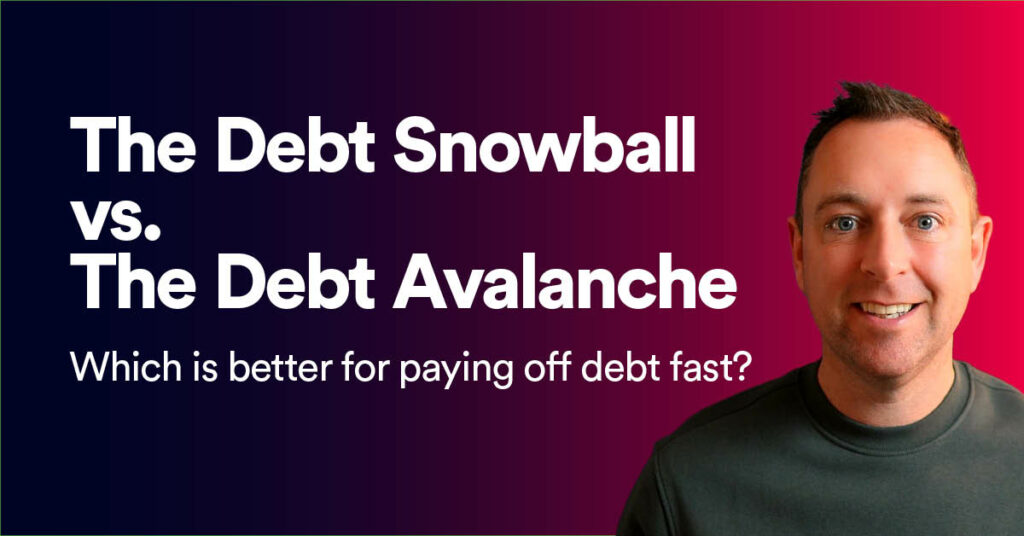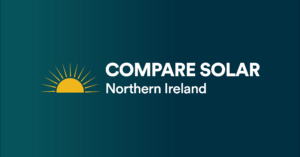The debt avalanche method and the debt snowball method are two of the most popular strategies used to pay down debt. When it comes to paying off loans or debts, I’d argue that there is no “best strategy”. Rather the correct strategy will be the one you stick with. With that said, for those who want to pay down their debt fast or in the cheapest and most efficient way, there is a clear winner, but I’ll explain why later.
With the debt avalanche method, you first pay down the highest-interest debt. Following this, you continue the effort and intensity by layering up the payments onto the next debt. This is repeated until all debts are fully repaid.
Using the debt snowball method, you pay off the debt with the smallest balance remaining first, working your way up to the final debt which will have the largest balance.
Each method requires that you list out your debts and make minimum payments on all but one of them. Then, once the debt is paid off, you target another balance, and so forth until you have paid down all your debts. Depending on your personal preference, and circumstances, you may decide either method might be better suited for you once you understand the differences.
Considerations common to both the debt snowball and debt avalanche methods
The debt snowball and the debt avalanche methods are two of the most common ways to pay down debt fast. While they are very different, there is some commonality between the two.
Strategy to pay down the debts
Each of these debt repayment methods focuses on a singular debt to pay down at a time. You put all your effort and intensity into paying down the debt and when this debt is fully repaid you layer the original payments on top of your minimum monthly payment on the next debt. This creates the snowball or avalanche effect.
Finding the extra money
Whenever you start to pay down debt, you need to find the money to do so in your household budget. Many of you won’t have budgeted before and in that instance, I urge you to check out our How to Budget Effectively and our 50/30/20 budgeting strategy articles. By putting any unused income towards your debt repayment, you are reducing your overall debt balance.
Unfortunately with the cost of living crisis and inflation levels causing significant price rises on many household purchases, there is often little left to pay towards your debt. I’d argue that even paying a little off your debt is a positive step forward. If small and frequent payments work for you, then that’s just fine.
Many of our personal financial coaching clients look at their budget and realise that even with a drastic cut to their budget, the time it will take to repay their loans is longer than they’d like. In addition to reviewing their budget, these clients have chosen to increase their incomes by starting a side hustle, second jobs or starting their own business. The greater the intensity and focus you put to paying down your debts, the quicker this can happen. And if you decide to earn extra income, then this side hustle can help you well beyond the debt paydown timeframe.
Taking action is the key
No matter which method you choose to pay down your debt, taking action and continuing to do so is the key takeaway. Debt can be one of the most stressful factors in anyone’s life and having worked with clients with all levels of debt, no one regrets paying down their debt.
The first step will always be the hardest, but by taking it, you’re making huge steps forward in your own financial journey.
Mortgages are not included in either strategy
Mortgage debt generally isn’t included in either of these debt repayment strategies. Mortgages generally have lower interest rates and are sizeable, so it does generally make sense to tackle all other debt first. Many of my personal financial coaching clients choose to focus on paying down their mortgage once their debt is cleared, however, others prefer to put their money into investments.
When your debt is repaid and you are continuing to build wealth, you’re doing amazing. So keep going!
Well done if you’re planning to pay down debt or are already on your journey! There will undoubtedly be tough times ahead, but you can do this, with enough focus and attention. If nothing else, I’m in your corner!
What is the debt snowball method?
The debt snowball method is when you pay off your debts one by one starting with the debt with the least remaining debt to be paid.
Looking at the example below, these debts would be prioritised with the smallest balance first.
- Personal Loan – Home Improvements
- Car Loan
- Student Loan
- Credit Card
| Debt | Balance | APR | Monthly minimum |
| Credit Card | £10,000 | 21% | £300 |
| Personal Loan – Home Improvements | £4,000 | 17.99% | £120 |
| Student Loan | £8,000 | 6.25% | £200 |
| Car Loan | £6,000 | 4.99% | £149 |
When using the debt snowball method, the interest rate being charged is ignored entirely. Your primary focus is to pay down a single debt at a time, putting your effort and money into this alone. For many, ticking off debts works to provide motivation on their debt-free journey.
You must continue to make the minimum monthly payments on any other debt you have to ensure you don’t accrue any additional costs or charges on those.
| Pros of the debt snowball method | Cons of the debt snowball method |
| There will always be a certain level of motivation when you pay off a debt. And this motivation happens quicker due to paying down the debts with the lowest balance first. | This debt repayment strategy will cost you more than the alternative because you do not pay the interest with the highest cost to you first. |
| The snowball effect allows you to see the results of your efforts quickly and continuously. As you pay off one debt, the balance you previously put into that is redirected to the next. Quickly you see the amount increase and debts start to tumble. | The debt snowball method takes longer to repay all of your debts in full, due to the greater amount of interest payments you will make by not tackling the debt with the largest APR first and working through them in that order. |
The debt snowball method was primarily popularised by Dave Ramsey and many of his followers successfully paid down debt using this method. It may not be the most efficient way to do so, but the consistent reinforcement and motivation that comes with paying off debts is a huge factor in sticking with any strategy.
What is the debt avalanche method?
The debt avalanche method is a debt repayment strategy where you pay down your debts starting with the most costly debt. This is usually the debt with the highest interest rate (APR).
Looking at the example below, these debts would be prioritised with the smallest balance first.
- Credit Card
- Personal Loan – Home Improvements
- Student Loan
- Car Loan
| Debt | Balance | APR | Monthly minimum |
| Credit Card | £10,000 | 21% | £300 |
| Personal Loan – Home Improvements | £4,000 | 17.99% | £120 |
| Student Loan | £8,000 | 6.25% | £200 |
| Car Loan | £6,000 | 4.99% | £149 |
| Pros of the debt avalanche method | Cons of the debt avalanche method |
| The amount of interest you pay on your debts will be the lowest possible value as you are paying off the most costly debt first. | The highest interest-rate debts are often those with the largest balances also. This means that it can take some considerable time to pay down the first few debts. Paying down debt is hard and many say that the debt avalanche method doesn’t keep them motivated on the journey. |
| By paying off the most costly debt first, you will also reduce the amount of time to pay down all of your debts. |
As with the debt snowball method, you must continue to pay the monthly minimum payments on all other outstanding debts.
If you’re serious about paying down your debt in the most effective way, the debt avalanche method provides the cheapest and fastest route to do so. The challenge will be staying motivated on the journey. However, instead of looking at the debt being paid as a single goal, I personally would break down each debt as a percentage. Every contribution to paying it off in full increases the percentage achieved. You can do this on a bit of paper or in a spreadsheet and it does help both when paying down your debt and when you further start to build wealth.
Debt Snowball vs Debt Avalanche Roundup
If you are reading this article, congratulations on taking the first step to paying down your debt. You’ve already overcome the hardest challenge. I’m not saying this process will be easy, but there is no one I have ever spoken to who hasn’t absolutely positive things to say about becoming debt free.
It won’t happen overnight, but the habit of debt pay down instills and the money you’ll be able to save after your debt is repaid will help you on your own financial journey for the rest of your life.
Whether you choose the debt snowball or the debt avalanche method, the best debt repayment strategy will always be the one you stick with.
If you want to build your knowledge of personal finance but prefer video, then head over to the Foundered Money Youtube Channel. Or if you want to continue the conversation, you can chat directly with Connor on Instagram


